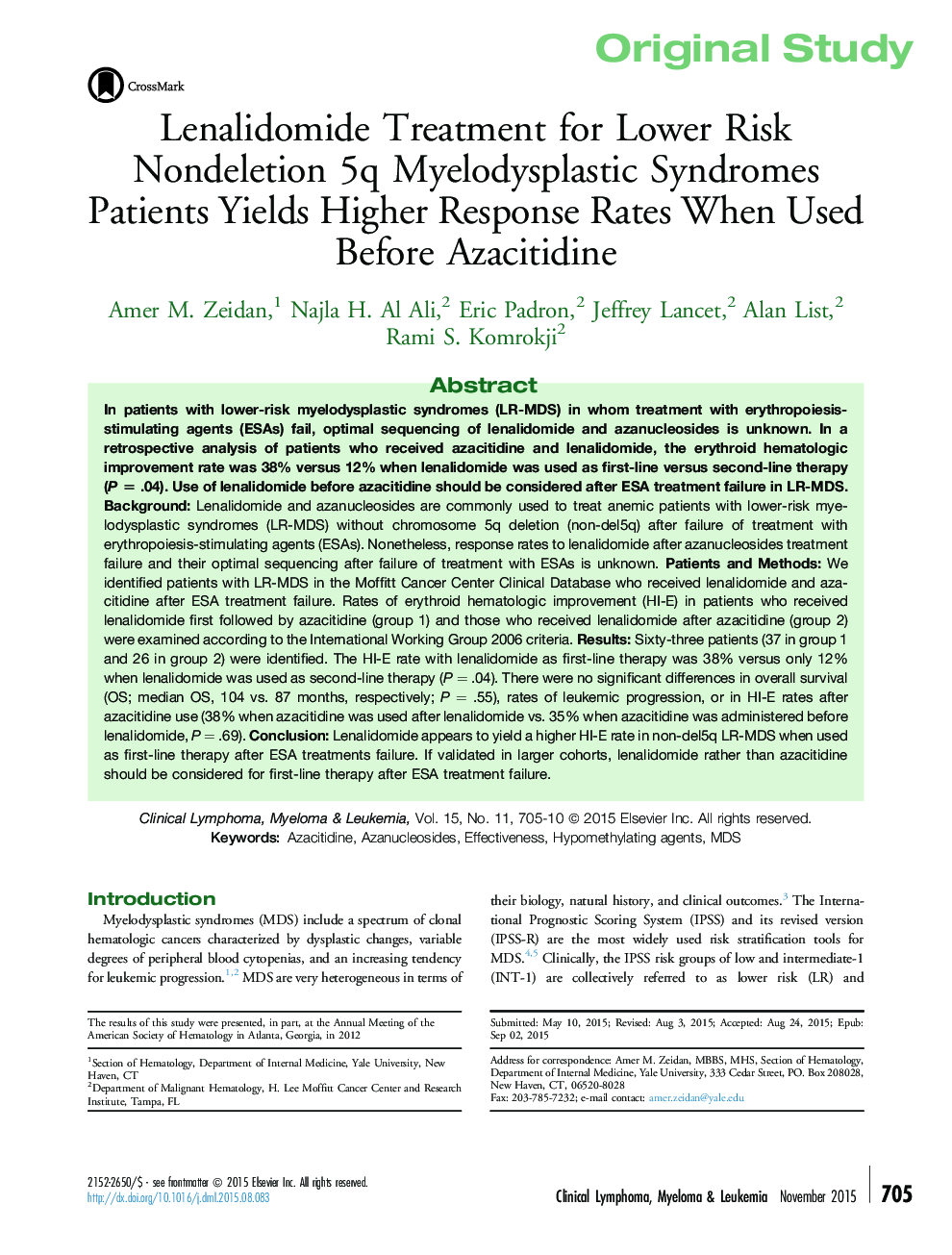| Article ID | Journal | Published Year | Pages | File Type |
|---|---|---|---|---|
| 2754370 | Clinical Lymphoma Myeloma and Leukemia | 2015 | 6 Pages |
BackgroundLenalidomide and azanucleosides are commonly used to treat anemic patients with lower-risk myelodysplastic syndromes (LR-MDS) without chromosome 5q deletion (non-del5q) after failure of treatment with erythropoiesis-stimulating agents (ESAs). Nonetheless, response rates to lenalidomide after azanucleosides treatment failure and their optimal sequencing after failure of treatment with ESAs is unknown.Patients and MethodsWe identified patients with LR-MDS in the Moffitt Cancer Center Clinical Database who received lenalidomide and azacitidine after ESA treatment failure. Rates of erythroid hematologic improvement (HI-E) in patients who received lenalidomide first followed by azacitidine (group 1) and those who received lenalidomide after azacitidine (group 2) were examined according to the International Working Group 2006 criteria.ResultsSixty-three patients (37 in group 1 and 26 in group 2) were identified. The HI-E rate with lenalidomide as first-line therapy was 38% versus only 12% when lenalidomide was used as second-line therapy (P = .04). There were no significant differences in overall survival (OS; median OS, 104 vs. 87 months, respectively; P = .55), rates of leukemic progression, or in HI-E rates after azacitidine use (38% when azacitidine was used after lenalidomide vs. 35% when azacitidine was administered before lenalidomide, P = .69).ConclusionLenalidomide appears to yield a higher HI-E rate in non-del5q LR-MDS when used as first-line therapy after ESA treatments failure. If validated in larger cohorts, lenalidomide rather than azacitidine should be considered for first-line therapy after ESA treatment failure.
